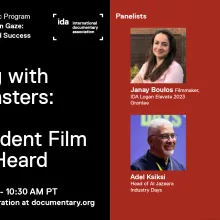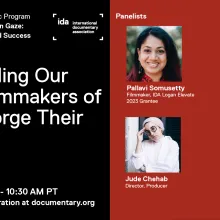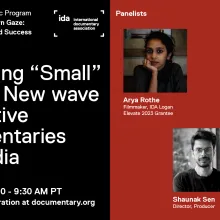The panel discussion will delve into the differences between television/broadcast content and international festival documentaries and how funding works in these different spaces around the world. What does it mean to have broadcast partners versus festival partners? Does one offer more creative freedom than the other? How can we negotiate the drawbacks and best use the opportunities these different forms offer? The conversation will examine broadcasters' priorities and ways they evaluate content that might drive them to co-produce, buy, or broadcast certain films instead of others.
Panel
Filmmakers of color often encounter pushback from the industry around how to tell our stories our way. We are nudged to sacrifice our vision, our creativity, and sometimes even the truth, in the name of commercial viability and mass audience appeal. How can we be supported to tell stories outside of the dominant gaze, if most formative spaces for international artists are trying to make a film “accessible” to a mass audience?
In recent years, “creative documentaries,” especially those from India, have soared to new heights globally, carving out a unique space in world cinema. What exactly are "creative documentaries," and how do they intersect with Indian and Western audiences? India has experienced a rise in successful documentaries, yet many of these projects are primarily made possible through support from Western funding bodies and institutions. This dynamic prompts reflection on the tenets by which decisions to fund these films are made.


